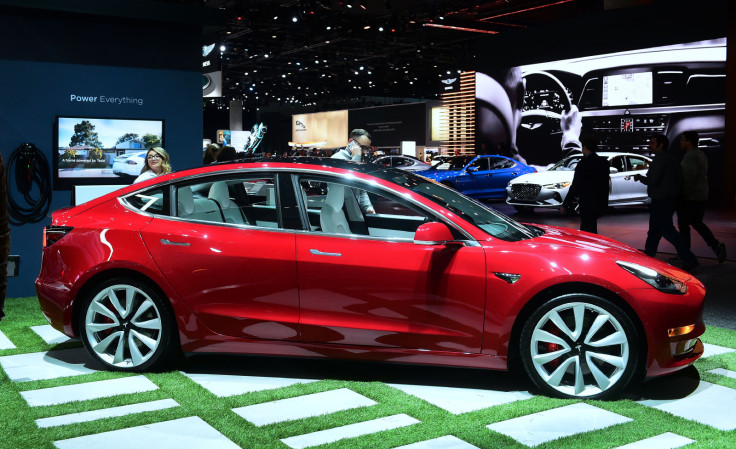Is Tesla doomed?
Demand for the electric-vehicle pioneer's products is cooling off. Yet there are two potential catalysts that could get Tesla moving in the right direction again.
Tesla (NASDAQ:TSLA) has been a battleground stock for many years. But for most of 2019 -- and especially the past couple of months -- the news has been almost all bad.
As a result, Tesla shares have lost nearly half of their value since mid-December. Last week, the stock broke below the $200 mark for the first time since late 2016. Some Wall Street experts are now saying that Tesla may need to restructure or even declare bankruptcy in the face of falling demand for its electric vehicles.
Does this mean that Tesla is doomed? Let's take a look.
Demand is sagging
Warning signs have been piling up for Tesla investors since the beginning of the year. The first sign that something was amiss was when Tesla implemented multiple price changes for its vehicle lineup during the first quarter. This seemed to suggest that demand was fading.
These fears were confirmed in early April. Tesla reported that it delivered just 63,000 vehicles in the quarter, down from more than 90,000 a quarter earlier. Most troublingly, the company delivered just 12,100 of its highly profitable Model S and Model X vehicles in the period -- down 56% sequentially and down 44% year over year.
It was inevitable that this would negatively impact Tesla's earnings, but the damage was even worse than what most expected. Tesla posted a Q1 loss of $4.10 per share -- $2.90 per share excluding stock-based compensation -- and it used up $1.5 billion of its $3.7 billion cash stash, between its negative free cash flow and the repayment of $920 million of debt. This gave the company little choice but to raise more capital in early May.
There have been more troubling signs in the past month. On May 16, CEO Elon Musk sent an email to all employees, asking them to "examine every expenditure at Tesla no matter how small" to find savings. This could be a simple attempt to maximize efficiency. However, in the past, Tesla's radical cost-savings plans have been correlated with big losses. (For example, the company abruptly decided to shutter most of its retail locations in the midst of its poor financial performance last quarter.) So the latest cost-saving plan doesn't bode well.
Even more recently, Consumer Reports panned Tesla's Autopilot system, saying it's not close to being ready for prime time. This further emphasizes that Musk's prediction of fully self-driving Teslas being on the road by the end of next year is preposterous.

The first quarter may have been unusually tough
As bad as the recent news has been, Tesla may not be in as much danger as some bears believe. First, the big loss and rapid cash burn last quarter were exacerbated by the timing of deliveries during the period. About 10,600 vehicles were in transit to customers at the end of the quarter -- and thus delivered early in Q2 -- compared to fewer than 3,000 a quarter earlier.
The resulting decrease in revenue and increase in inventory hurt Tesla's first-quarter earnings and cash flow. That timing impact should at least partially reverse this quarter.
Second, during Tesla's earnings call last month, Musk opined that order activity would accelerate over the course of 2019. There's been some evidence of that so far. A recent leaked email apparently from Musk stated that Tesla had already surpassed 50,000 net new vehicle orders since the beginning of the second quarter. That puts it on pace for perhaps 90,000 net new orders in the quarter, which lines up with the low end of its deliveries guidance.
Together, these two factors suggest that Tesla will achieve much better earnings and cash flow in the second quarter than it did a quarter ago. (Whether it actually generates positive free cash flow is less clear.)
However, U.S. Tesla buyers will face another drop in the federal tax credit as of July 1, which could hurt the company's sales momentum. Meanwhile, by the end of this quarter, Tesla will have met most of the initial surge of Model 3 demand in international markets. As a result, the growth that the company is counting on in the second half of 2019 may not materialize.
Two things could decide Tesla's fate
The evidence isn't clear-cut one way or the other, but demand for Tesla's three current vehicles seems to be plateauing short of the 500,000-per-year mark that the company has long targeted. Additionally, Tesla has had to significantly reduce prices for the Model S and Model X, while Model 3 demand is normalizing toward more affordable variants, pressuring margins.
Barring another sharp drop in demand, bankruptcy probably isn't a big risk at this point. That said, Tesla isn't necessarily on track for a return to profitability at any point in 2019.
That means the Tesla bull case increasingly relies on two future developments: the opening of Tesla's new factory in China and the launch of the Model Y. Building vehicles in China will reduce costs and allow Tesla to sidestep a massive tariff bill. That could potentially enable lower prices, stimulating sales. Meanwhile, the Model Y compact crossover could become far more popular than the Model 3, as demand has shifted dramatically from cars to crossovers.
In theory, the China factory should open in late 2019, and Model Y production should begin in late 2020. However, Tesla has a long track record of missing deadlines.
With the company having no clear path to sustainable profitability with its current products in its current markets, missing these deadlines could pose grave risks to Tesla.
Adam Levine-Weinberg has no position in any of the stocks mentioned. The Motley Fool owns shares of and recommends Tesla. The Motley Fool has a disclosure policy.
This article originally appeared in The Motley Fool.





















